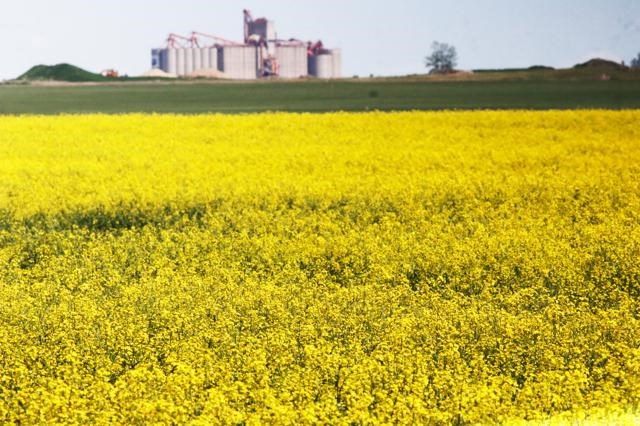By Clint Jurke
Should I spray for sclerotinia stem rot? Canola growers in Western Canada are often challenged to find a satisfactory answer to this annual question. In reality, we don't need very much infection to justify a fungicide application.
When considering the total cost, a fungicide would only have to preserve around three bu./ac. of yield to break even. This economic threshold should be easily achieved in a high-yield canola crop growing in an area with a history of sclerotinia stem rot.
The general rule is that yield loss is roughly half of the “incidence rate” – which is the percentage of plants infected in a field. If 10 per cent of plants are infected, yield loss will be five per cent. For a 50 bu./ac. canola crop, the three bu./ac. threshold would be a six per cent loss – so that means around 12 per cent of plants would have to be infected. With moderate amounts of moisture before, during and after flowering, this 12 per cent incidence rate could be fairly common in any canola growing area of Western Canada.
What is a moderate amount of moisture? Kelly Turkington, plant pathologist with Agriculture and Agri-Food Canada, provides this rough guide: Rainfall amounts of least 5-10mm more than two days a week and daily minimum relative humidity (RH) over 80 per cent is enough for the sclerotinia stem rot infection cycle.
Basically, if topsoil underneath the canola canopy has moisture for most or all of the day, this promotes germination of sclerotia and production of apothecia – the tiny mushrooms that release sclerotinia spores. Continued humid conditions in the canopy will provide the moisture needed for infection.
The decision to apply a fungicide to prevent sclerotinia stem rot may be generalized by answering these four questions:
• Have environmental conditions prior to flowering been moist enough for apothecia development and survival? (A few rains and humidity commonly above 80 per cent in June is usually enough.)
• Is the canola crop canopy dense and yield potential high? (If your pants get wet when scouting canola mid-day, the canopy is probably sufficiently dense and humid for disease.)
• Does the weather forecast predict precipitation and/or humidity during the flowering period?
• Is the pathogen present in sufficient quantities? (With moisture and a history of sclerotinia stem rot in the area, you can assume the answer is yes. To find out for sure, Spornado from 20/20 Seed Labs or DNA-based petal testing kits from Quantum Genetix and Discovery Seed Labs can identify the presence of spores.)
If the answer is “yes” to all four questions above, then spraying is generally recommended. If the answer to some of the questions is “no” or uncertain, then the decision is more difficult. Perhaps an easier approach is to identify the situations where risk is limited.
Factors that decrease risk
– Dry conditions through the flowering period will decrease the risk of economic yield loss from sclerotinia stem rot.
– A poor canola canopy that allows for a lot of air flow will reduce canopy humidity, and it also signals lower yield potential.
– Below or well-above average temperatures (less than 10°C or greater than 25-30°C) and limited rainfall. Risk is limited when current conditions are dry, max daily temps are 30°C or more, and forecast to continue for seven to 14 days.
Farmers and agronomists often ask whether heavy rains or continuous rains will reduce the risk. Continuous rain events can wash off of petals from plants, remove spores from the air and trap spores in water droplets that form on the tops of the apothecia. But rain events that actually reduce sclerotinia stem rot risk would be unusual.
If conditions are right for disease and farmers decide to spray, the spray window for most fungicides is 20 to 50 per cent flower. Many products also allow for two applications, which can provide a return on investment in high-risk situations with good moisture, high yield potential and an extended flowering period.
For lots more on this topic, including videos and helpful links, please read “Factors in the sclerotinia spray decision” at canolawatch.org.
(Clint Jurke is agronomy director for the Canola Council of Canada. Email jurkec@canolacouncil.org)



